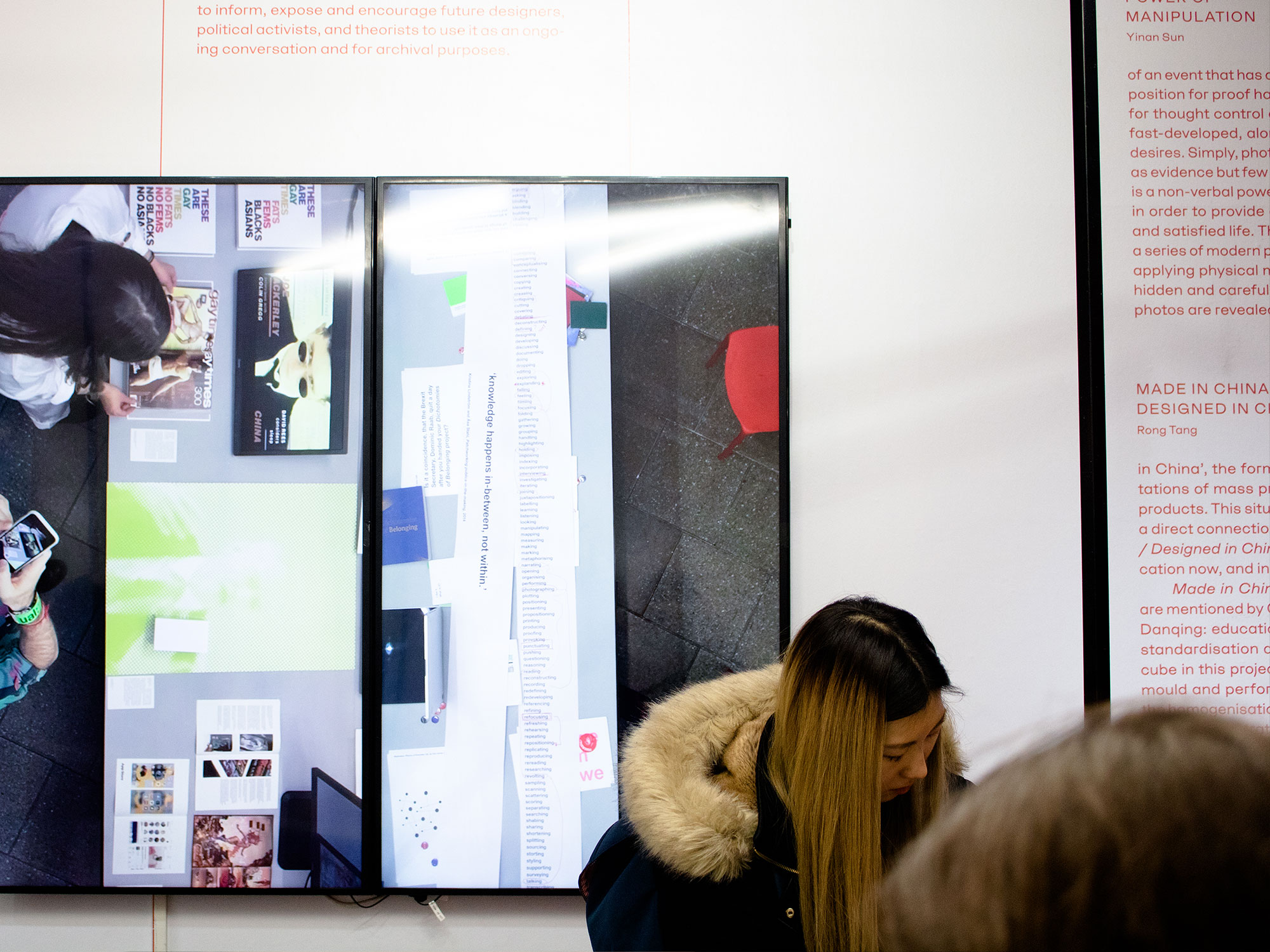It’s that time of year again, high summer—long lazy days, cheap plonk, and an online Degree Show! That’s right folks, what’s usually the highlight of every design students four-year stint, has been laid waste by the Covid-19 pandemic. The physical degree show is no more. Well, for this year anyway. With institutions in Ireland and beyond cancelling shows and moving their exhibitions online, we thought that this might be the ideal opportunity to consider what the future holds for the degree show in terms of function, delivery and output. Firstly we speak to students about how the move to a digital showcase effected their final year projects. Then we hear from tutors and industry leaders about the purpose of the degree show, whether the exhibition format is still relevant and how the shows might evolve in the coming years.
The student response to closures has been interesting to observe. Some UK institutions have been heavily criticised by students, alumni and mainstream media for their handling of the situation. One RCA student wrote a scathing article about the board of management and a group of Glasgow School of Art students set up an online petition to save their degree show. Needless to say, we were keen to hear what Irish students had to say and to their credit, they seem to be taking it in their stride.
Claire Dillon has just finished her fourth year in Limerick School of Art and Design, studying Graphic Design Communications. She explains that her class had to adapt its approach to suit a digitally displayed output, “This was an incentive to look differently on our design practice and learn new skills that we wouldn’t normally have used. Personally, this challenged me to develop my photography skills, something that wasn’t a strong suit of mine previously. On a broader scale, as industries turn to a more digitally based way of communicating with audiences, we as designers may have to re-evaluate work practices—sparking innovation and new perspectives.”
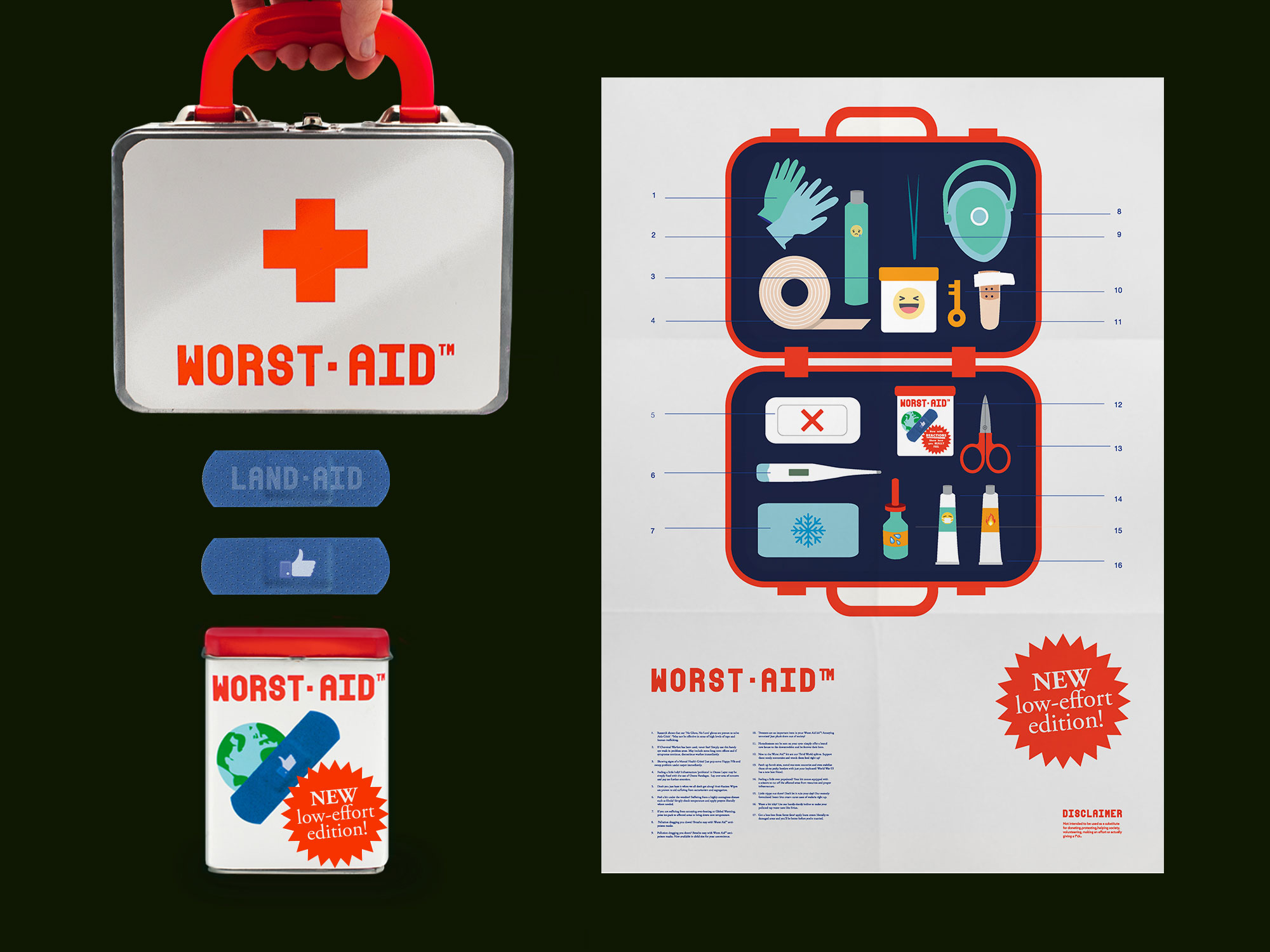
Before the lockdown, her final year project was focused on print and audience interaction, “Creating a project for inclusion on a digital platform added a strange new complexity. The new criteria challenged me to really focus on how well my project communicates with the viewer and the integrity of concept, rather than the production value.”
While Claire admits missing out on her show was disappointing, she remains philosophical about the experience, and believes institutions hosting both digital and physical degree shows is the way forward. “It does have some advantages. The idea that our work can be accessed by a potentially wider online audience could be extremely helpful in forming new connections and breaking into the industry. Alongside this, students could still get the benefit of face to face interaction and physical displays.”
Conor Smyth, is a final year graphic design student in the National College of Art and Design. He had to pivot on his final project outcomes knowing that the work would only be showcased digitally. “My original plan was physical, large-scale pieces that would really flourish when seen in the first person. However, with the degree show moving online, coupled with the lack of available facilities and travel being limited, I decided to change my outcomes. My final pieces now compliment the format of a digital degree show or catalogue.”
He doesn’t consider the transition a bad thing though, “I am actually confident that my work is more interesting than if things had proceeded as normal, the extended deadlines allowed a bit of breathing room to really sit back and think critically about my outcomes and how best to showcase them.”
Conor explains that the switch from the physical to a digital degree show caused him to consider the context in which his work will be seen, “ I tried to create work which is best consumed through the computer screen. Originally all my outcomes were print-based, in formats I was familiar with. Now, each of my outcomes are things I’ve tried for the first time, a variable typeface, an interactive online platform, and an online performance piece.”
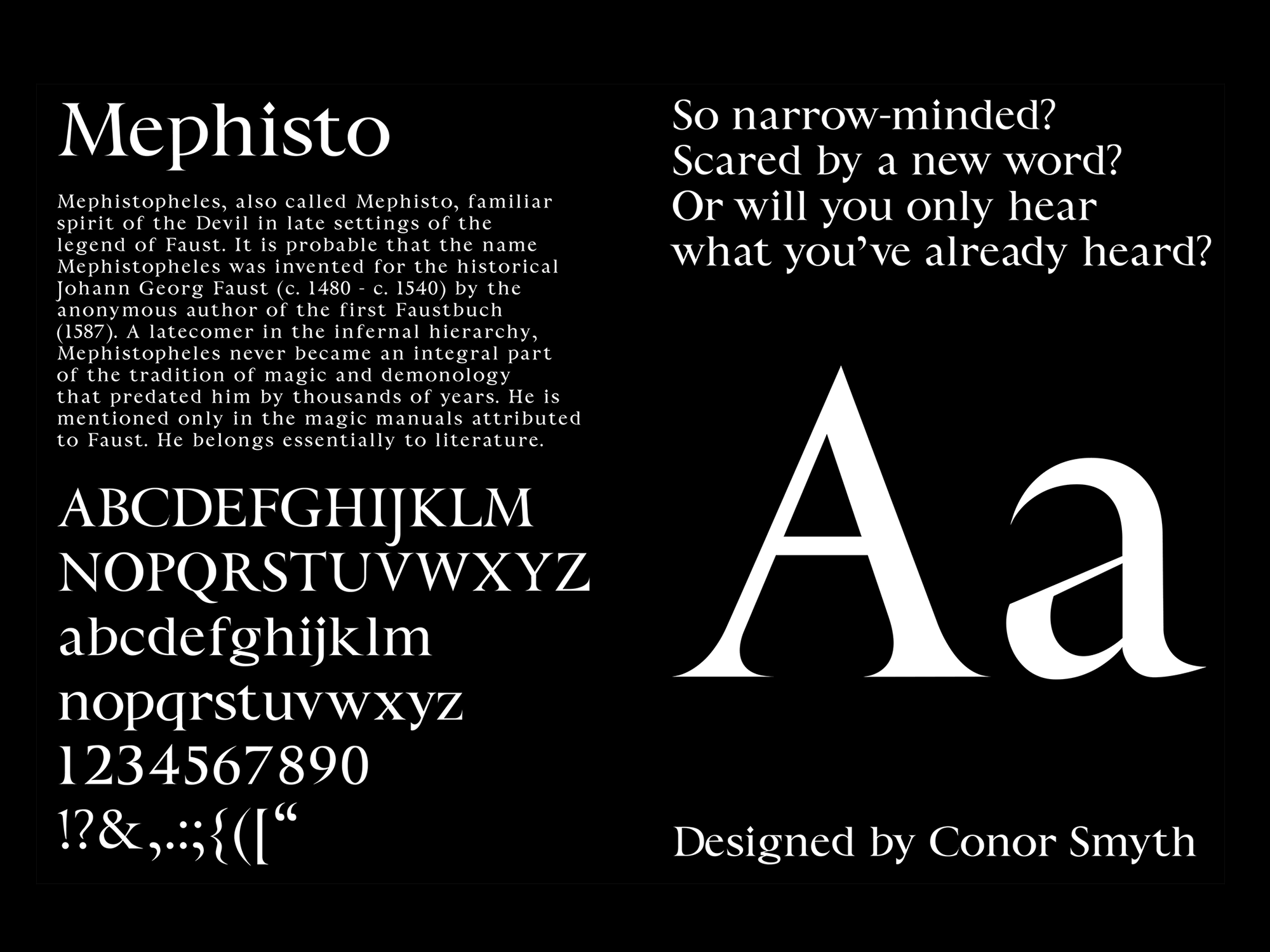
Eamon Spelman is year four tutor on the Graphic Design Communication course at Limerick School of Art and Design/LIT and he develops the point about design and context. “The exhibition format suited graphic design when it was mainly a print-based medium and large display work, like posters, were a key medium. Since then, design outcomes have changed considerably. Now, it’s about complex strategies or frameworks working across a range of media, with the challenge being how to present the project appropriately — the results are often a construct where design elements are repeated, resized in order to suit the format.”
He explains that the common thinking is that design should be experienced in the context for which it was intended but the exhibition format can sometimes skew or limit that. “An example would be when a student creates a book and spreads from it are reproduced and hung on the wall. Similarly, with an app design for phone, screengrabs and UX are often reproduced and displayed in order to give the work a visual presence within the exhibition. In cases such as these, the exhibition format is not ideal but every effort is made to provide some context.”
The Degree Show means so much more to the students than just exhibiting work. It marks the end of their education, the beginning of a new chapter and an opportunity to make industry connections. When asked what their expectations of the degree show were before the pandemic, both Conor and Claire described it as being their “last hurrah”. Seán Mongey, is co-founder of Dublin-based design agency Post Studio and he echoes this sentiment “It’s a way to celebrate graduates time together and a chance to bring family and friends into the mix to see (and hopefully understand) what you spent the last 3–4 years doing.”
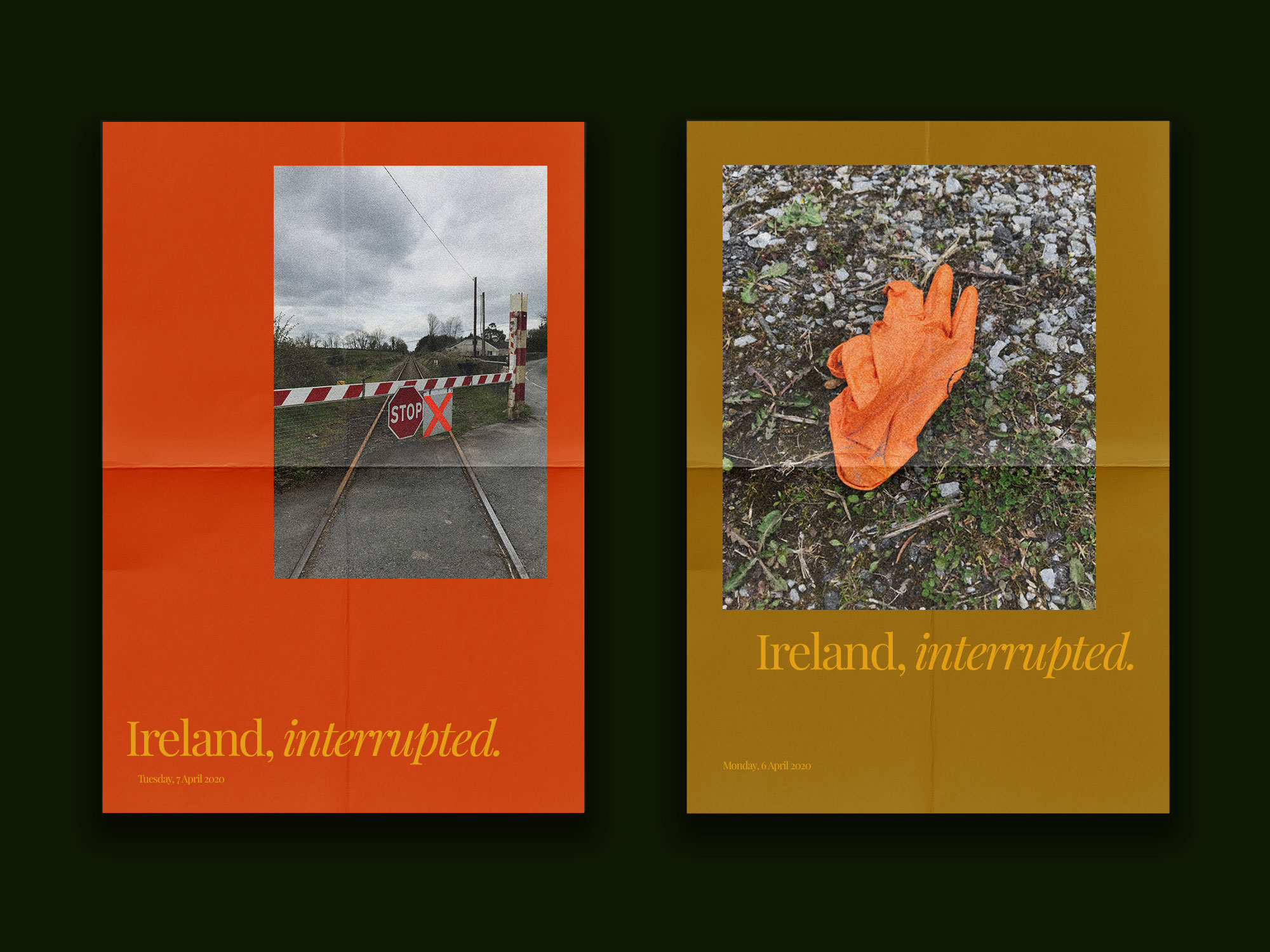
He also explains that the degree show is a bridge for many graduates between education and industry. “I see it as a way for graduates to set out their stall, make it clear what they are capable of and the type of work they wish to pursue. We expect the final project to dictate that somewhat. If a graduate does a UI/UX last piece, it usually means they don’t want to work in a studio doing predominantly visual identity.”
Yvonne Rath is creative director and co-owner of Pixelpod, a multidisciplinary studio in Wexford Town. She believes that the shows are an opportunity for students to curate and showcase their most creative work in a professional manner. “Aside from it being part of the degree requirements, its a celebration and an occasion when students can fully explain and impress upon themselves, family and friends what they have achieved over the course of their degree. It’s also an opportunity for members of the creative industry to visit the degree show and find new talent and be part of the educational side of the design community.”
Yvonne believes it’s important to recognise that students are future design leaders and attending Degree Shows is the first step in doing that. “We invited one student for an interview based on seeing his work at a Degree Show and he got the job. We hired Mark in 2018 as a graphic and web designer and he was really fantastic to work with. He proved to have great attention to detail and was, overall, a very talented designer. I still remember his final year project at the Degree Show. It was a branding project for a transport system that included visual identity, excellent signage mock-ups, and printed materials. His portfolio also showcased his website work which included some custom coding.“
The concept of the degree show has many advantages but is the traditional format still relevant? Eamon Spelman, believes the shows will always exist in some shape or form. “How the degree show evolves will depend on any number of factors, some are fundamental, based around outcome and medium and others around behaviour and expectation. For example, as a result of COVID19 will an exhibition space have to be re-designed to adhere with distancing guidelines? Will an audience want to experience work in a physical exhibition space? If so what are the alternatives? These are just some of the questions that may have to be addressed in the coming years.”
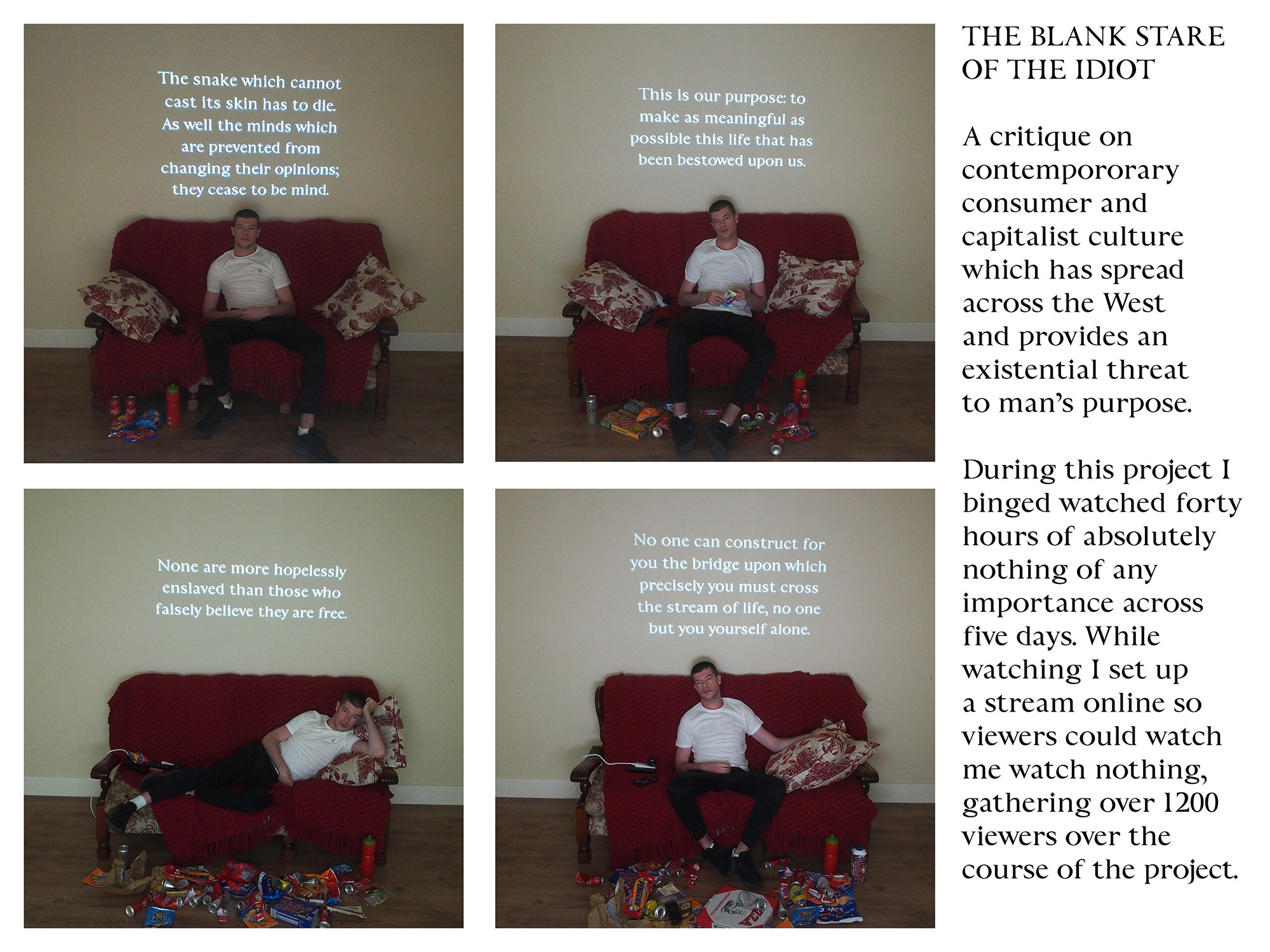
Paul Bailey is an Irish graphic designer, researcher and educator, he’s currently course leader for the MA Graphic Media Design (MA GMD) course at London College of Communication, UAL. “As I’ve come to see and experience the show, it really has many layered and inter-related functions spanning from the personal and professional. It must speak to the institutional context it is presented within. It should also speak into and contribute to the discourse of practice/subject. Fundamentally an exhibition should consider the public it intends to host.”
He outlines the challenges he faces in running a large exhibition like a degree show, “there are limitations in terms of resources made available by the institutions, exploration of the format and audience access, also sustainable and ecological practices must be considered.”
But Paul is excited at the prospect of how the degree show will evolve in the coming years. “The shows will become more event-oriented with less passive engagement—more distributed, leveraging the possibilities of formats and technologies we have come to know due to our technologically networked society. I think they’ll move beyond a showcase of practice towards a critical forum for the students, staff, experts from the field and the broader public to open debate, review and critique on the place, potentialities and concerns of graphic design.”
Yvonne Rath also sees the shows becoming more conversational in format, “I think students would benefit from having more interaction with visitors during the show. I think being able to talk about your work is an important part of a creative role so perhaps setting aside time slots for students to speak about their work to an audience who are not from a creative industry will help with verbal communications. This could happen on a separate evening to the opening night of the graduation show.”
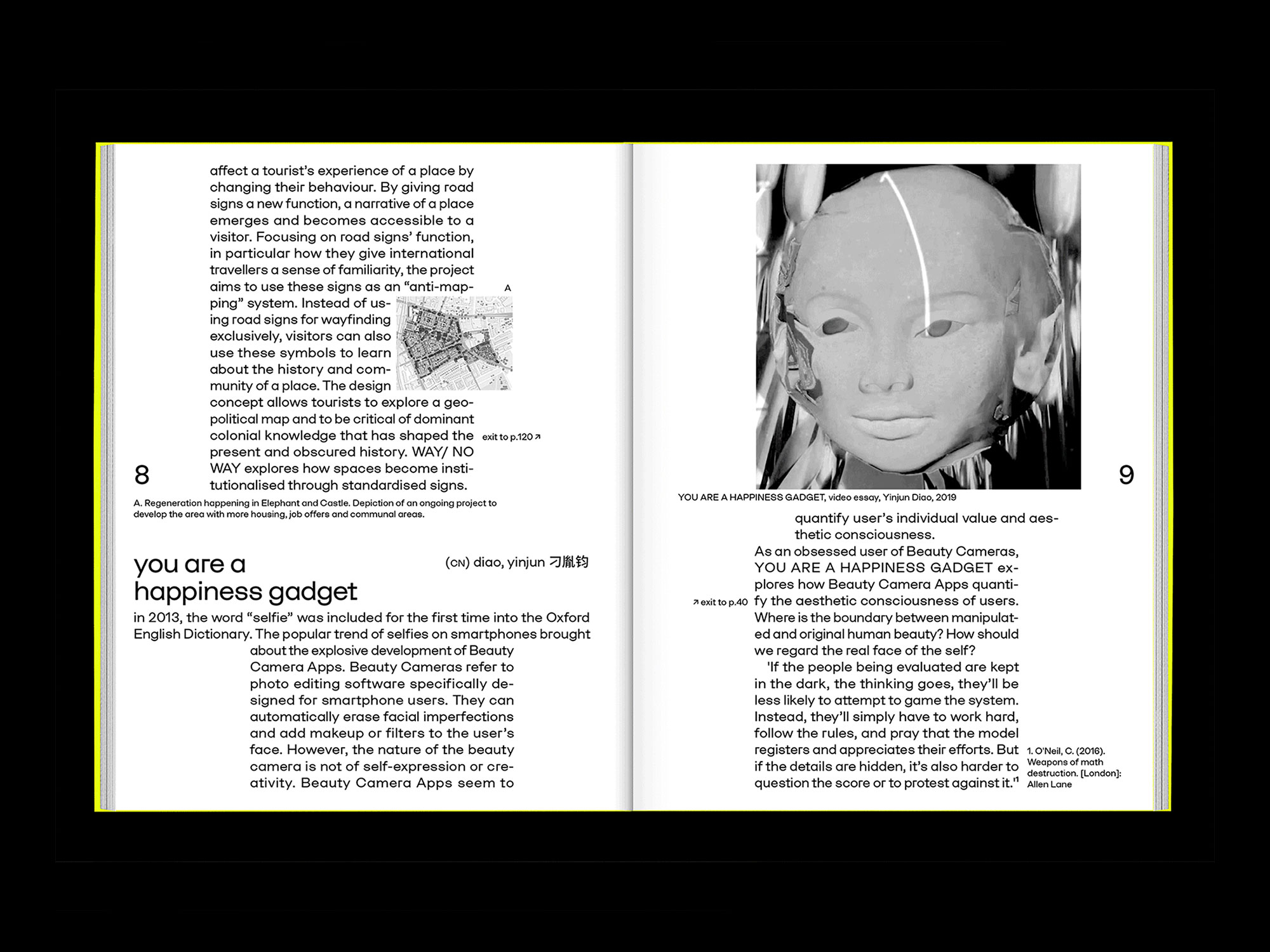
For Seán Mongey, he sees the next one or two years requiring significant evolution as institutions reshape annual shows to suit the current climate. “Pushing more of this online is the obvious first step which many of the institutions have already started instead of producing a printed doorstop. The challenge I see is how institutions improve and grow this over time.”
“Maybe a show doesn’t need to exist for a fixed duration, or on the college campus? The show could be optional, allowing those that wish to participate, do so. Could all shows nationally be combined and curated? Present graduate work by topic or subject rather than by course? Could the format of each year’s show be completely different? Introduce cross-discipline final projects?”
Paul Bailey explains that they’ve already made significant moves away from the traditional degree show format. “In 2017, we launched A Line Which Forms A Volume: a critical reader of graphic design-led research that is authored, edited, designed and published by the MA GMD participants annually in the form of a publication and a symposium, hosted at LCC during the Graduate Show session. This shift in format, towards publication and event, was devised to extend the framework of ‘a degree show’, and to offer more routes into and out of the graduate work. And in 2018, the participants devised a live-stream exhibition, where work was presented and performed on broadcast platforms to a YouTube channel, on 4-hour rotations.”
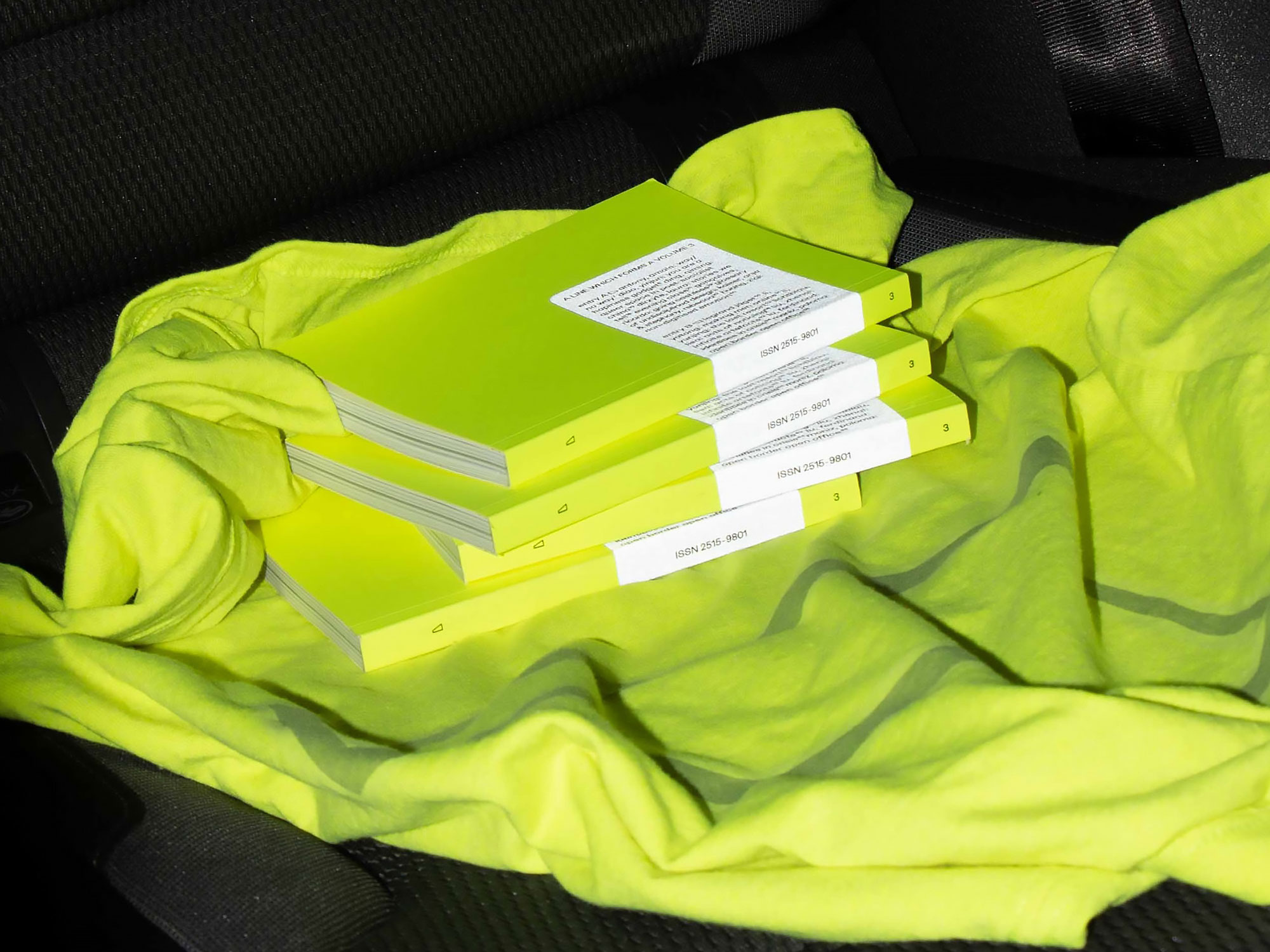
What’s abundantly clear is the significance that all our contributors place upon the degree show concept. It’s an opportunity for students to showcase their work, make industry connections, and gather together with tutors and classmates one last time. But there are limitations to the exhibition-only format and maybe a hybrid approach could be the solution — a physical show complemented by an online platform. Innovative ideas for expanding the delivery and scope of the show have been shared by our contributors and some are already being utilised. We’ll watch with interest to see how the degree show evolves in the coming years.
An abridged version of this article can be found on the Business Post website.
